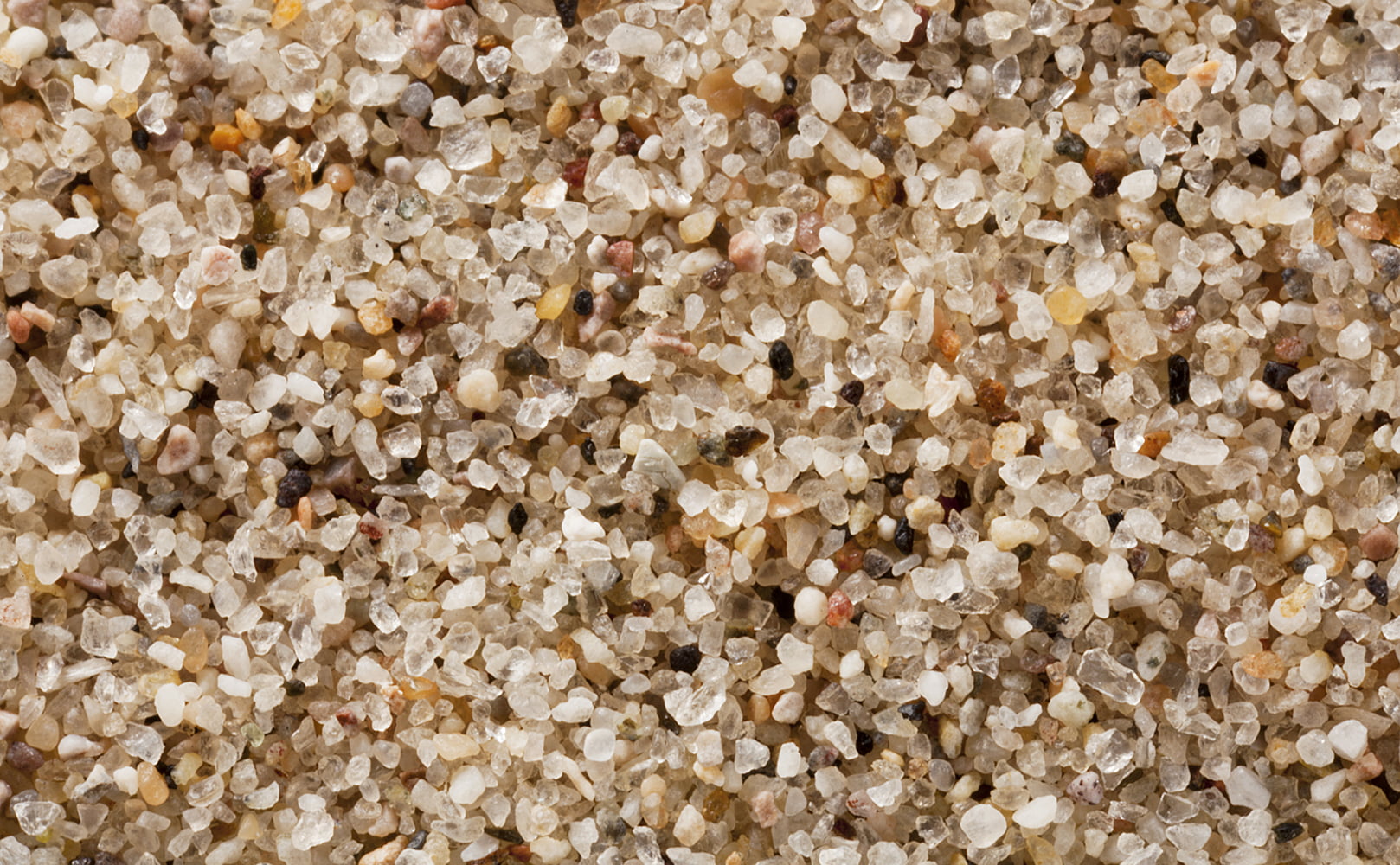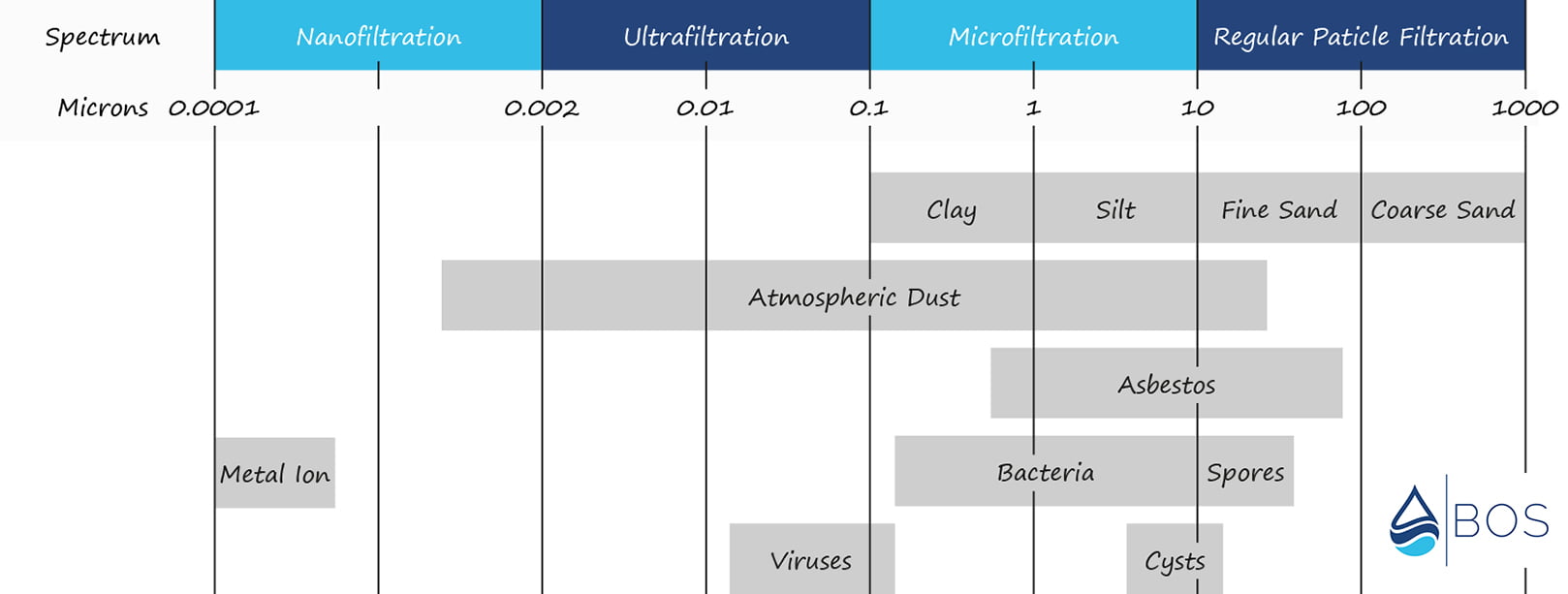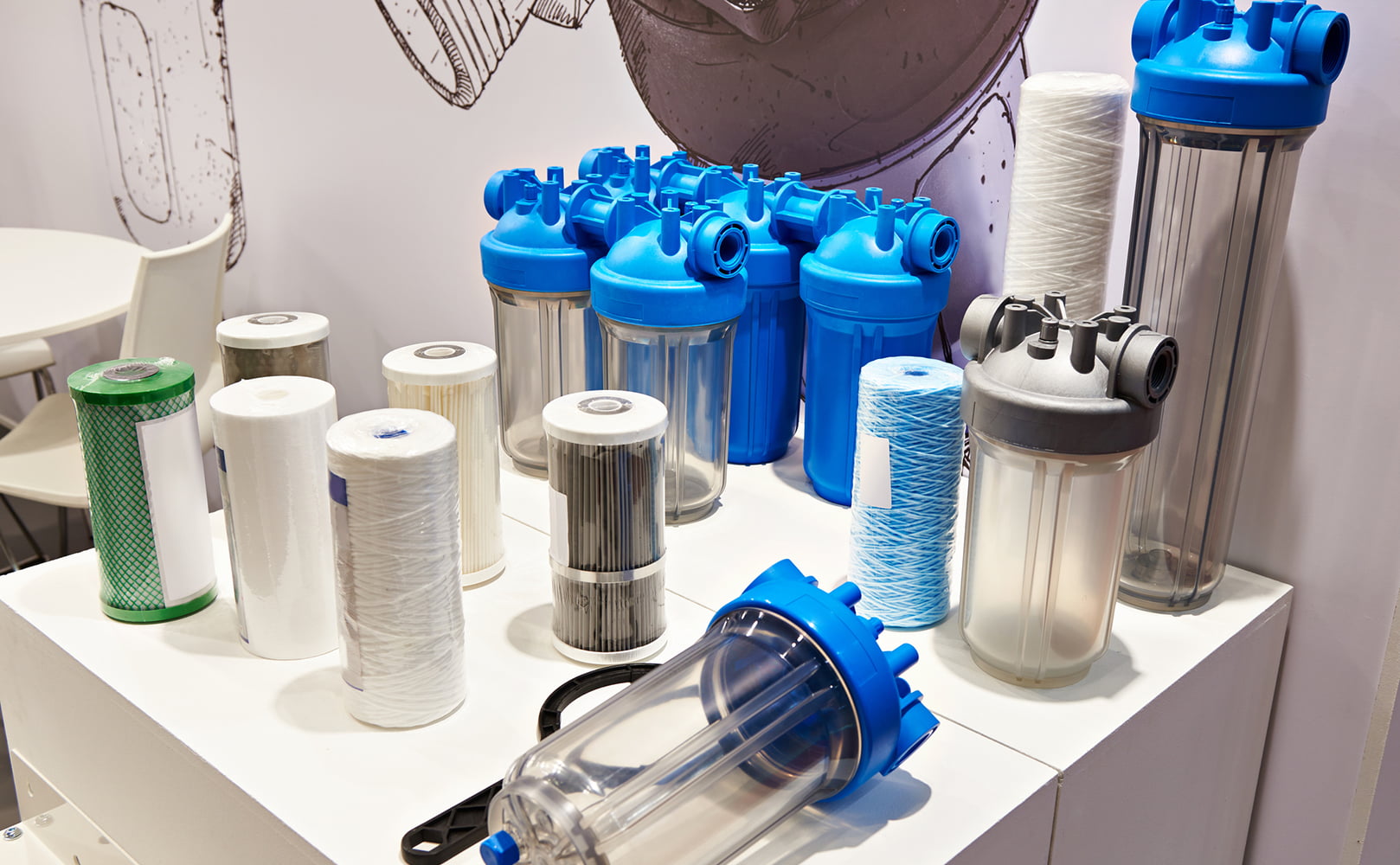About Whole House Water Filter Micron Rating (Size)
Written by: Gene Fitzgerald // Last Updated: Aug 15, 2023
This page may contain affiliate links. If you buy a product or service through such a link we earn a commission at no extra cost to you. Learn more.
If you’ve been shopping around for a whole house water filter, you’ve probably noticed that they often have a micron rating listed.
Understanding what this means and how it relates to the effectiveness of the filter is important if you’re not yet sure what model to buy.
It can take some time to research the market properly once you’re armed with this information, but it will greatly help you in narrowing down your decision.
So, let’s dive into whole house water filter micron ratings!
Key Takeaways
- Whole house water filter micron rating describes a filter’s effectiveness of removing floating particles down to the specified size.
- Filters with a lower micron rating can remove smaller contaminants.
- Common whole house water filter micron ratings are 50, 25, 10, 5, and 1.
What Is a Micron?
A micron is a unit of measurement. And it’s commonly used for describing the effectiveness of different whole house water filters, indicating the size of the pores of the filter’s material.
Paying attention to the micron ratings of filters is important as it can provide you with valuable insights into how well they purify the water that passes through them.
The Size of a Micron
One micron is equal to 1/1000 of a millimeter, or around 0.000039 inches. This might seem very small, but it’s actually not that significant compared to the sizes of some common particles found in water supplies.
For example, sand grains can be as small as 0.5 microns, but some go up to 60 microns. Your hair is around 70 microns in diameter on average.
Micron Ratings
Micron ratings are used to identify the effectiveness of a whole house water filter. The exact meaning of a filter’s micron rating refers to the size of contaminants that will be removed by the filter. Filters with a lower micron rating are therefore more effective at removing smaller contaminants.
It’s important to understand the difference between nominal and absolute micron ratings in this context though – some people treat them as interchangeable, but there is actually quite a big divide between the two.
Nominal vs Absolute Micron Ratings
Nominal and absolute micron ratings are quite different, and you should take the time to understand what each one indicates. Nominal ratings indicate that a filter has been tested to remove a certain percentage of contaminants – typically around 80%, though it could be even less with some manufacturers.
Absolute ratings, in comparison, indicate that a filter removes all contaminants of a given size. This makes it a more important and reliable metric in cases where you insist on going for the best-performing model on the market.
If you don’t care that much about high-level filtration effectiveness, you can check the nominal rating of each whole house water filter and not go into any additional detail.
What Is a Micron-Rated Whole House Water Filter?
A micron-rated whole house water filter is a filter that’s been specifically tested for its performance at removing contaminants of a given size. If a filter has a nominal rating of 50 microns, for example, this means that it will remove around 80% of floating particles with a size of 50 microns or higher. An absolute rating of 25 microns, on the other hand, means that the filter will effectively remove all contaminants of this size.
What Contaminants Does Your Micron Filter Remove?
Here is a diagram showing what micron ratings can be used for removing different types of contaminants from water.
Common Whole House Water Filter Micron Ratings
If you’re curious about some of the common whole house water filter micron ratings found on the market and what kinds of contaminants they refer to, here are some examples.
100 Microns
Can filter relatively large particles, such as sand and rust chips.
50 Microns
Finer sand, dust, hair, and other contaminants that can be seen with the naked eye fall in this category.
25 Microns
A 25-micron water filter can effectively remove most types of particulate contaminants, and is a good middle ground if you want good filtration without spending too much.
5 Microns
5-micron filters are great at removing finer particles like sediment, silt, and even certain types of bacteria and cyst.
1 Micron
1-micron filters can remove most types of fine contaminants and should be used at the end of the filtration chain to get rid of anything that wasn’t caught by the previous filter stages.
Sub-Micron Level
Sub-micron filtration may be a bit excessive for most households, as most types of solid contaminants are already removed by 1-micron filters. Sub-micron filtration additionally targets asbestos and some viruses among other stuff.
How Many Microns Should Your Whole House Filter Be?
As you can see, there’s a lot of variety across the board, and finer whole house filters are capable of removing much more than ones with larger pores. However, you don’t always need a filter that removes the smallest possible contaminants.
What Do You Need to Remove?
Start by figuring out what you want to remove from your water in the first place. This is best done by assessing your water quality with specialized testing conducted in a laboratory. At-home test kits are usually not precise enough to paint an accurate picture.
Water Pressure and Flow Rates
You should also pay attention to your water pressure and flow rates. If you use a filter with pores that are especially small, this may restrict your water flow and cause pressure issues.
Types of Filter Cartridges
Let’s take a look at some of the most common types of whole house water filter cartridges you can find on the market, along with their intended uses.
Sediment Filters
Sediment filters use various types of materials to trap solid particles. However, they don’t do much for other types of contaminants, including chemicals, salts, and many types of metals.
Surface Filter Cartridges (Pleated)
Pleated filters are good for situations where longevity is the most important factor, as they can hold a larger number of particles on their surface. This makes them suitable for low-maintenance setups.
Depth Filter Cartridges (String Wound, Melt Blown, Spun)
Depth filters are designed to remove sediment, rust, and various other contaminants of a similar size by running the water through a thick filter. They are better at capturing smaller particles compared to surface filters.
Ultrafiltration Filters
Ultrafiltration removes contaminants as small as 0.01 microns, which can effectively target pretty much everything that might bother you in your water supply. This includes bacteria and other substances that won’t normally get removed by regular filtration methods.
However, for many households, ultrafiltration may be too excessive and may cause problems like reduced water flow.
Carbon Block Filters
Carbon block filters can vary in effectiveness, ranging from 0.5 to 10 microns (nominal) for most models. This makes them great as an all-around solution that captures many types of contaminants, including smaller ones that other filtration methods may easily miss.
If you have any questions about whole house water filter micron size/rating please don’t hesitate to leave a comment below!
Information provided on BOS is for educational purposes only. The products and services we review may not be right for your individual circumstances.
We adhere to strict editorial guidelines. Rest assured, the opinions expressed have not been provided, reviewed, or otherwise endorsed by our partners – they are unbiased, independent, and the author’s alone. Our licensed experts fact-check all content for accuracy. It is accurate as of the date posted and to the best of our knowledge.




